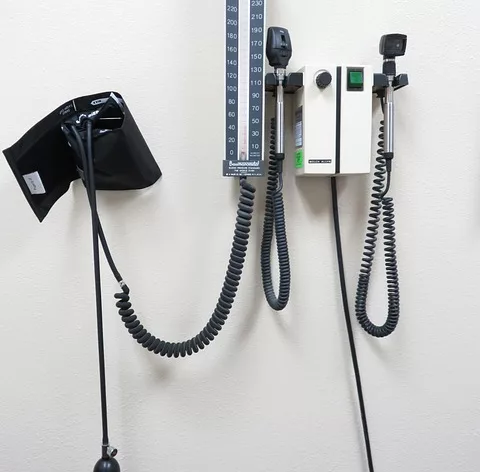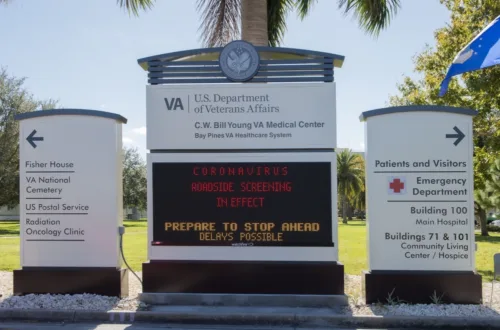VA PACT Act Enrollment Period For Post-9/11 Veterans Has Ended

UPDATED 11/30/23: The special enrollment period discussed below has ended. September 30 2023 was the last day to sign up.
The Department of Veterans Affairs offered a special sign-up period for post-9/11 veterans who want to claim PACT Act benefits for toxic exposures in the line of duty. That offer ended on September 30, 2023.
The PACT Act is a law expanding VA health care and benefits for veterans from a variety of service eras exposed to burn pits, Agent Orange, and other toxic substances.
Thanks to the PACT Act, various medical conditions are now presumed to have been caused by military service and no further justification for a VA claim is required. But these benefits are not automatic and must be applied for.
VA Enrollment Period For Post-9/11 Veterans
Post-9/11 combat veterans who served between 2001 and 2013 had the option to enroll in Department of Veterans Affairs health care as part of a special enrollment period ordered by the PACT Act. As mentioned above, this special enrollment option has since ended.
Once enrolled, PACT Act guidelines state that all troops serving in certain areas were subject to toxic exposures. When a veteran signs up for VA healthcare, their symptoms (if any at registration time) and their severity helps determine the course of VA care and compensation.
One of the critical issues for veterans who have served in areas where toxic exposure was possible? Delayed onset of symptoms after that exposure.
The goal of the program? Get veterans enrolled in the VA healthcare system as early as possible.
If symptoms manifest at some point later on, the veteran is already in the system and there won’t be a delay in compensation or care due to the need to process a new application form.
Related: How to Check the Status of Your PACT Act Claim
Qualifying for the PACT Act Special Enrollment Period
To qualify, applicants were required to meet one of the following:
- Served on active duty “in a theater of combat operations during a period of war after the Persian Gulf War,” according to the VA official site, OR;
- Left military service between September 11, 2001, and October 1, 2013, OR;
- The applicant is a Post-9/11 combat veteran who left the military on or after Oct. 1, 2013 (you have up to 10 years to apply) OR;
- The applicant served in combat after November 11, 1998.
How to Get a VA Disability Rating
If you qualify for PACT Act compensation, you will be awarded a VA disability rating after submitting your VA claim. Here are some things to remember about applying for VA disability:
- According to VA.gov, your disability “must connect to your military service. For many health conditions, you need to prove that your service caused your condition.”
- For some medical conditions, the VA automatically assumes military service caused the medical condition. The VA calls these presumptive conditions, and PACT Act claims may include these.
- The VA considers a condition presumptive “when it’s established by law or regulation” according to VA.gov.
- VA>gov reminds, “If you have a presumptive condition, you don’t need to prove that your service caused the condition.” You must meet the service requirements for the presumptive condition, but no further proof is required.
Related: The PACT Act and Your VA Benefits
PACT Act-Related Presumptive Conditions
If you want to apply for PACT Act-related VA compensation for a service-connected medical issue, be sure to check the list below for medical issues related to PACT Act benefits. These medical issues are considered presumptive:
- Brain cancer
- Gastrointestinal cancer of any type
- Glioblastoma
- Head cancer of any type
- Kidney cancer
- Lymphoma of any type
- Melanoma
- Neck cancer of any type
- Pancreatic cancer
- Reproductive cancer of any type
- Respiratory cancer of any type
- Asthma that was diagnosed after service
- Chronic bronchitis
- Chronic obstructive pulmonary disease (COPD)
- Chronic rhinitis
- Chronic sinusitis
- Constrictive bronchiolitis or obliterative bronchiolitis
- Emphysema
- Granulomatous disease
- Interstitial lung disease (ILD)
- Pleuritis
- Pulmonary fibrosis
- Sarcoidosis
Related:
- TRICARE Pharmacy Contract Updated
- PCS Pet Travel Policy In Limbo
- TRICARE Cost Increases
- VA Reproductive Healthcare Policy
- Will the President Veto the 2024 VA Budget?
- Major Pay Raise for Troops Proopsed in 2024 Budget
About the author
Editor-in-Chief Joe Wallace is a 13-year veteran of the United States Air Force and a former reporter/editor for Air Force Television News and the Pentagon Channel. His freelance work includes contract work for Motorola, VALoans.com, and Credit Karma. He is co-founder of Dim Art House in Springfield, Illinois, and spends his non-writing time as an abstract painter, independent publisher, and occasional filmmaker.


